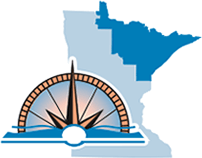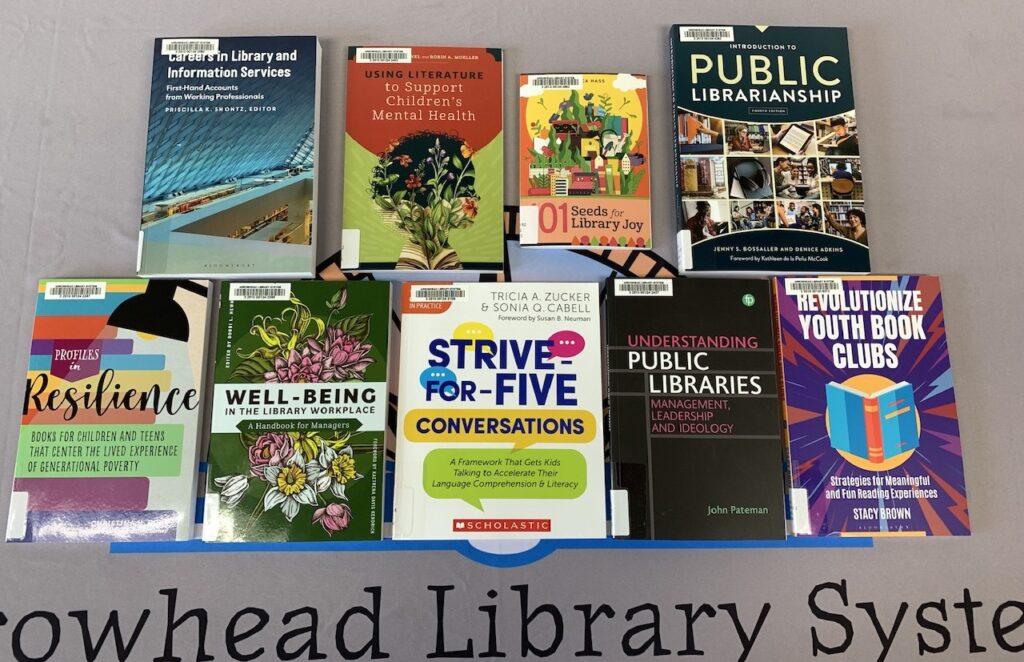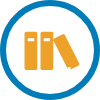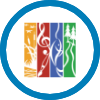The Arrowhead Library System has added a number of new books to our Professional Collection that are available to borrow now! This post includes the description for the recent books, along with helpful links for more details. All these items can be found and requested in the online library catalog. If you are a library worker and want to learn more about the Professional Collection or would like to suggest a book for purchase for this collection, please contact Stephanie at stephanie.wichlacz@alslib.info.
New Books by Title and Description:
25 Projects for Eco Explorers
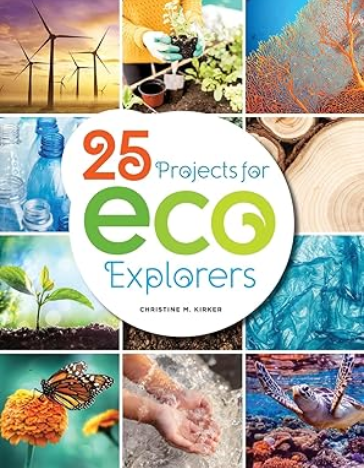
Christine M. Kirker
Though the daily news is filled with reports of climate change, severe weather, environmental distress, and endangered species, children’s librarians and educators might be uncertain how to incorporate these topics into their current curriculum. This handy resource offers an ideal solution, presenting more than two dozen ready-to-use projects on environmental topics that can be integrated into K-5 educational lesson plans and library programming for children aged 4-10. Starting with a representative picture book as a foundation, children are guided through each topic using a hands-on project that reinforces learning. Whether they’re in the classroom or library, kids will feel excited and engaged as they explore such topics as
- honeybees, loggerhead turtles, mountain gorillas, polar bears, and other animals;
- environments like coral reefs, estuaries, and the Galápagos Islands;
- wildfires, hurricanes, and tornadoes;
- composting, gardens, seeds, and the farm to table movement; and
- garbage, recycling, renewable energy, water conservation, and Earth Day.
Complete with detailed information about each topic, including sections that explore interesting related facts, this book will activate children’s curiosity and appreciation for the world we live in.
Recommended for: Public Libraries, School Libraries
25 Projects for Global Explorers
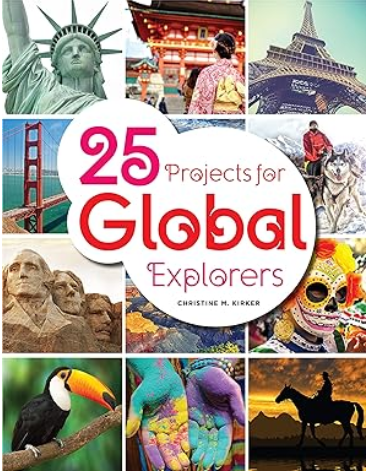
Christine M. Kirker
With the increased emphasis on incorporating STEM activities in children’s curriculum at ever earlier ages, often neglected are opportunities to explore subjects outside the sciences, or simply to give children the time and space to use their imagination. 25 Projects for Global Explorers will spark their interest in history, geography, events, and landmarks around the world, and nourish their creativity, collaboration, and critical thinking skills. Designed for kids aged 5-10, and flexible enough to use in either storytimes or classroom settings, the projects here
- use representative picture books as tools for learning about different places and people;
- take kids imaginations on journeys to a variety of U.S. landmarks, such as Grand Canyon National Park in Arizona, the Iditarod Trail Sled Dog Race in Alaska, Kennedy Space Center in Florida, and Lei Day Festival in Hawaii;
- introduce more than a dozen fascinating places, traditions, and cultures from across the world, including the Amazon Rainforest in Brazil, the Day of the Dead in Mexico, the Ziggurat of Ancient Mesopotamia in Iraq, and the San People, formerly known as the Bushmen of South Africa; and
- include hands-on activities for teaching children what makes each topic special, materials lists, programming tips, and additional resources.
The projects inside this book will reinforce learning, encourage experimentation, and bolster children’s appreciation for the world.
Recommended for: Public Libraries, School Libraries
52 Ready-to-Use Gaming Programs for Libraries

Edited by Ellyssa Kroski
Gaming programs offer many benefits: they encourage interaction among patrons, strengthen community bonds with the library, and when done right they can be incredibly popular. Kroski, a bestselling author as well as an avid gamer herself, has gathered more than 50 creative programming ideas from public, school, and academic libraries nationwide. Most will hit your core gaming audience of teens, but you’ll also find plenty of options for adults, tweens, and younger children―the mix of tabletop, video, and live-action gaming programs includes something for everyone. Complete with step-by-step instructions for how to prepare and host programs, a materials and equipment list, estimated budget, and recommendations for age ranges, inside this book you’ll find fun ideas such as
- Instagram or zombie-tag scavenger games;
- a video game rec league;
- teaching cybersecurity with Minecraft;
- STEM with virtual reality and other programs for VR equipment;
- fostering science literacy with themed board games;
- a life-sized Game of Life;
- STEAM with an amazing race;
- hosting a Gaming Con at your library;
- video game study breaks for calming students’ nerves during Finals Week;
- leading enthusiasts in writing an original roleplay or designing a board game; and
- building your collection of games through donations and grants.
The engaging programs in this book will have people flocking to your library―it’s all in the game.
Recommended for: Public Libraries, School Libraries
53 Ready-to-Use Kawaii Craft Projects

Edited by Ellyssa Kroski
In her new book Kroski, bestselling enthusiast of makerspaces, cosplay, and geek culture in libraries, has gathered creative and crafty librarians to share their most popular Kawaii programs. Running the gamut in terms of cost and difficulty, this book’s 53 programs are sure to include many that will fit your budget, space, and skills. Just scan the estimated budget, age range, materials, equipment needs, and learning outcomes in each listing. Projects include
- keychains with felt or 3D printing;
- slime squishies;
- 3D printed animal earrings;
- hosting a stuffed animal fashion show;
- monster emoji paper bookmarks;
- origami fortune cookies;
- buttons with anime or comic book art;
- crocheted coffee cozy or puppy nose warmer;
- tiny top hats with laser-cut felt cameos; and
- how to Kawaii-ify a planner.
What’s more, the plentiful suggestions for “next projects” scattered throughout the book will help you keep the super-cute fun going!
Recommended for: Public Libraries, School Libraries
101 Seeds for Library Joy
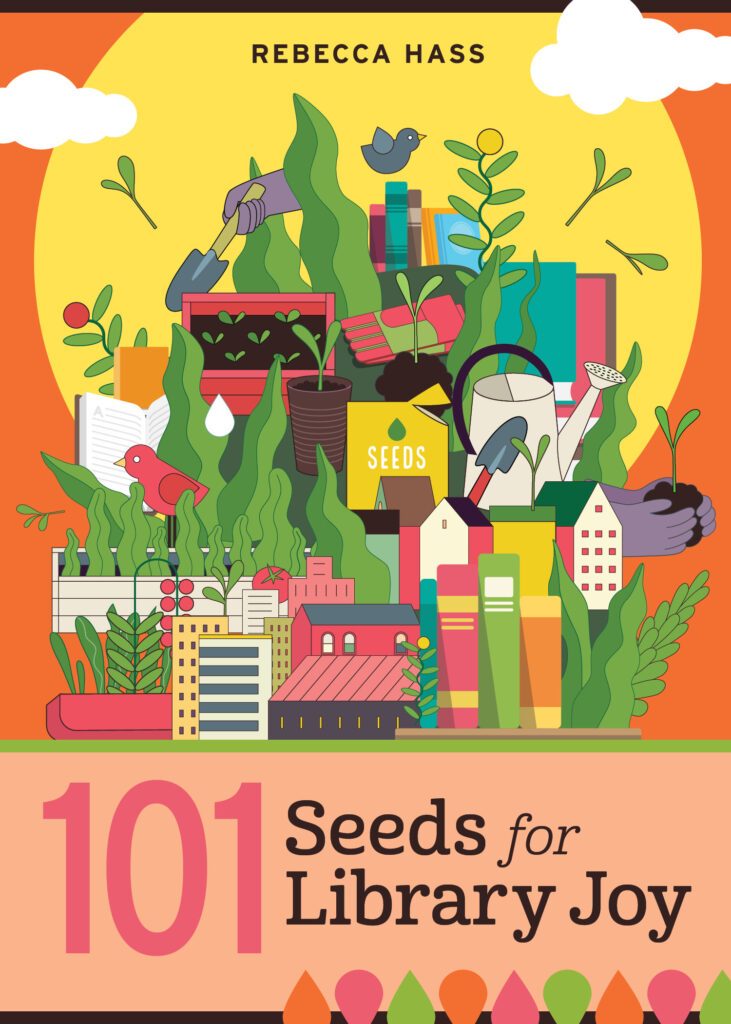
Rebecca Hass
Library joy is more than a feeling; it is a choice and call to everyday practices of connection, empowerment, and wellbeing. And it isn’t a heavy lift—in fact, it can all start with a few tiny seeds.
“Start your day with a smile to yourself, a service worker, a stranger, or a coworker.”
“Reminisce about a book that you’ve enjoyed and why. Post a book recommendation in a workroom or share it with a coworker.”
“Encourage someone new to libraries today – a library student, a new library user, a new coworker, or new community partner.”
This delightful book brims with dozens of joy-centering approaches and activities ready to draw on whenever your day could use a boost. It also makes a perfect gift and is sure to bring smiles to your fellow library workers, trusted volunteers, board members, and all the book lovers in your life.
Recommended for: Academic Libraries, Public Libraries, School Libraries, Special Libraries
Building Representative Community Archives: Inclusive Strategies in Practice
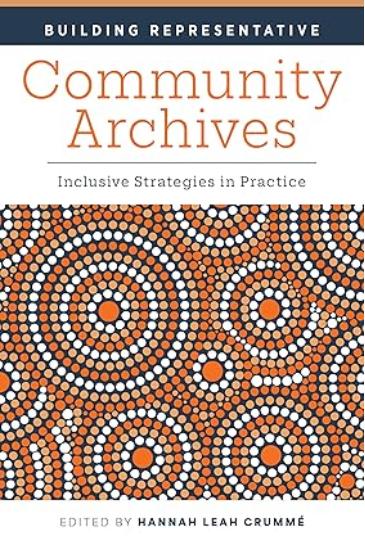
Edited by Hannah Leah Crummé
Libraries and archives are grappling with the problems created by collection practices of the past, many of which document those in power while bypassing alternate perspectives and stories. This volume examines continuing efforts in archives across the U.S. to build inclusive records that better represent the disparate histories of this country. It details varying approaches to uplifting community and activist archives that are working to preserve parallel histories, outlining a way forward that will help special collections librarians as they design projects in the future. Readers will discover
- the importance and value of records that preserve complicated, nuanced, and diverse histories;
- differences between community-created archives, community-centered archives, and archives that simply document various communities, made with little or no consultation of those whose histories are witnessed in the records;
- background on institutions’ recent collecting efforts, with case studies that illustrate innovative approaches, new techniques, errors and pitfalls, and the resilience and patience necessary to build collections;
- first-hand accounts by archivists in community organizations who are working within networks of trust to preserve and tell stories;
- how archivists are reassessing and reprocessing collections to bring the many and various stories they witness to the fore by employing changes in description detail or terminology;
- guidance on conducting, transcribing, and making accessible oral histories; and
- considerations of how to best use available resources, including equipment, time, people, and funding.
Recommended for: Academic Libraries, Special Libraries
Careers in Library and Information Services: First-Hand Accounts from Working Professionals
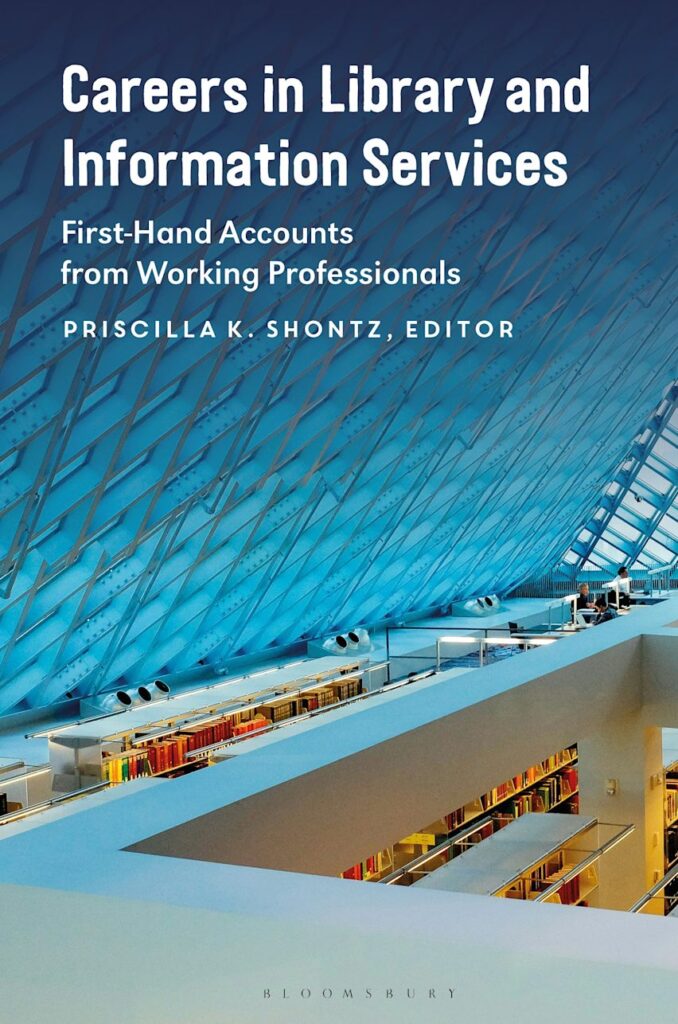
Edited by Priscilla K. Shontz
Helps readers understand what careers are available for graduates with a master’s degree in library and information sciences.
Written in a conversational, candid tone, Careers in Library and Information Services collects first-hand accounts from workers who have earned a master’s of library science degree to help new LIS graduates understand their career options.
Each of the chapters provides readers with a snapshot of a particular career. Chapters are gathered into parts: an introduction on “Why Do We Do This?” is followed by careers in public libraries, school libraries, academic libraries, special libraries, and careers outside of libraries. Each chapter author describes their typical duties, shares likes and dislikes, and offers advice for those wanting a job like theirs.
Invaluable for those considering entering an MLS program, those currently enrolled in MLS programs, graduates looking for work, and professionals considering a career shift, this engaging book is both practical and fun to read.
Recommended for: Academic Libraries, Public Libraries, School Libraries, Special Libraries
Generative AI and Libraries: Claiming Our Place in the Center of a Shared Future
Michael Hanegan and Chris Rosser
Addressing a topic of great concern with both urgency and clarity, this book offers a compelling vision for libraries to claim their central role as trusted stewards of knowledge and architects of a responsible and equitable AI-driven world.
In the form of generative AI, libraries are facing technological transformation of unprecedented speed and scale. Both controversial and disruptive, the sudden ubiquity of AI has already triggered uncertainty as well as the need for rapid adaptation. As AI reshapes how humans learn, work, and interact with information, libraries across the ecosystem—from public to academic, from school to special libraries—must resist the temptation to merely serve as static support and instead claim the center by becoming a dynamic, positive influence. Because, as the authors of this book persuasively argue, libraries are uniquely positioned to lead AI’s ethical and human-centered integration within communities. Blending theory and concepts with an unswervingly pragmatic approach, from this book readers will
- be introduced to foundational principles and frameworks for navigating the so-called “Age of Intelligence” that provide useful guiderails no matter how AI technology actively evolves;
- delve into the complex ethical considerations of AI, including bias, equity, privacy, misinformation, and the potential impact on human agency and dignity;
- receive guidance related to stakeholder engagement, resource allocation, and the need for continuous learning and adaptation;
- discover practical models for evaluating and implementing AI tools thoughtfully and effectively in ways that align with libraries’ values and mission;
- become familiar with STACKS, an approach for learning, problem solving, and innovation with generative AI;
- explore AI literacy as an expression of metaliteracy using seven frames for instruction and learning; and
- walk away with a sense of how libraries can actively define their essential role as leaders and shapers of the AI landscape, ensuring their continued value and preventing marginalization.
As this book demonstrates, by embracing their unique position as ethical stewards and trusted guides, libraries have an unprecedented opportunity to shape how AI transforms society—not from the margins, but from the center of a shared future.
Recommended for: Academic Libraries, Public Libraries, School Libraries, Special Libraries
Growing Teen Engagement: Strategies to Captivate Secondary Learners (AASL publication)
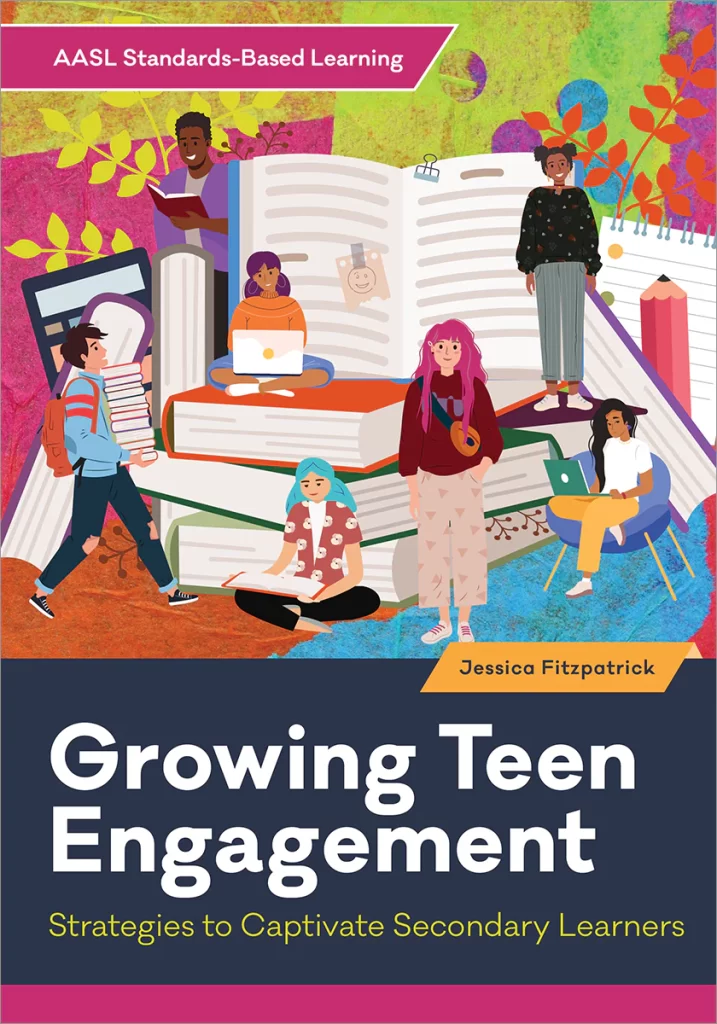
Jessica Fitzpatrick
You can ensure that your school library is a place where teens feel seen, heard, and inspired. Growing Teen Engagement is your essential resource for transforming your secondary school library into a thriving, learner-centered community. Whether you’re looking to inspire creativity, encourage teamwork, or build emotional resilience, this book gives you the tools to create a school library that supports the full spectrum of teen development. Inside, you’ll discover
- the ways in which welcoming, magnetic, and engaging programming for teens can align developmental needs with the AASL Standards;
- actionable strategies in each chapter that demonstrate how to promote creativity, self-definition, positive social interaction, physical activity, and more;
- a myriad of ready-to-use collaborative lessons, passive and active programs, and community outreach ideas; and
- an adaptable programming calendar.
Recommended for: School Libraries
Inspiring Teens, Tweens, and Families to Make a Difference in the World: Programming to Advance the Sustainable Development Goals
Amanda Moss Struckmeyer
Librarians and educators will find this ready-to-use programming book a powerful time-saving tool for presenting sustainability-themed events, discussions, community service opportunities, and much more.
The seventeen Sustainable Development Goals (SDGs) identified by the United Nations encompass an ambitious range of issues—world hunger, gender equality, and the climate crisis, to name just a few. Though timely and urgent, creating programming for these topics may feel daunting, and that’s where this book comes in. Sharing ideas and inspiration for book clubs, hands-on STEAM projects, movie discussions, guest speaker events, and much more, Struckmeyer offers accessible entry points for exploration of each SDG. And they’re all easily customizable for either public library or school library settings. Readers will discover
- programs and activities related to such topics as good health and well-being, ending poverty, peace and justice, responsible consumption and production, decent work, and clean water and sanitation;
- ideas perfect for multi-age audiences (families), tweens, and teens that can be tailored for different group sizes, programming spaces, budgets, and time frames;
- a plethora of flexible, cost-effective passive programs that patrons can engage in at any time;
- guidance on outreach opportunities for fostering partnerships with local experts and guest speakers; and
- pointers on additional and supporting resources including books, videos, and websites.
Recommended for: Public Libraries, School Libraries
Introduction to Public Librarianship, 4th edition
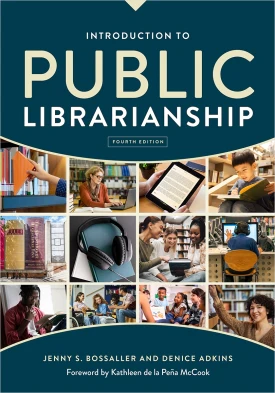
Jenny S. Bossaller and Denice Adkins
Dubbed “a peerless ambassador for public libraries, educating future professionals, current professionals in other parts of the field, and anyone else interested about the irreplaceable and irrepressible entities that are public libraries” (Library Quarterly), the newest edition of this trusted resource has been reimagined and restructured to make it even more relevant and useful. The definitive handbook on this branch of the profession, it covers every aspect of the public library, from its earliest history through its current incarnation on the cutting edge of the information environment, including
- a summary of current and historical issues in public libraries;
- a new chapter on financing which covers traditional sources, creative funding, capital campaigns, special projects, and the pros and cons of public/private partnerships;
- statistics, standards, planning, evaluations, and results;
- legal issues and politics, including how different states are set up, the role of state libraries, defining service population, and when the law and values conflict (such as union/non-union scenarios);
- updated coverage of important advocacy issues, including advocacy for access, the legal limits of advocacy, involving the community in advocacy, and communicating the effectiveness of the public library to stakeholders;
- organization, administration, and staffing, from the differences between small libraries and large systems to current issues like non-MLIS library workers and unionization;
- learning about who public libraries serve by utilizing community analysis, community needs assessments, and diversity considerations;
- adult services, youth services, children’s services, and serving special populations such as older adults, adults with special needs, schools, daycares, and the incarcerated;
- library technology, from structure and infrastructure to websites and makerspaces;
- issues related to library buildings and master plans, such as gathering community input and working with an architect on library spaces and library services outside of the library;
- library associations, state library agencies, and other professional organizations;
- disaster planning and recovery from technological, ecological, and biological disasters; and
- global perspectives on public libraries.
Recommended for: Public Libraries
Little Hands & Big Hands: Children and Adults Signing Together, 2nd edition
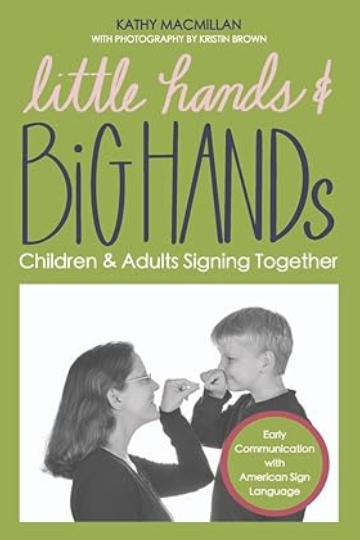
Kathy MacMillan
Research shows that signing with young children can reduce frustration for both parent and child, increase IQ, stimulate language learning, enhance bonding, and raise a child’s self-esteem. All those reasons are great, but the best reason to start signing with your child is that signing with babies, toddlers, and young children improves everyday life and communication. A child who can express him or herself with the aid of signs is far less likely to get frustrated and throw tantrums, and can initiate conversations about topics that interest them, which leads to adults talking more about those topics, which leads to a motivated and interested child absorbing more spoken language, which helps develop spoken language skills.
Signing with children naturally complements other language and literacy activities such as books, fingerplays, rhymes, and songs. Little Hands and Big Hands offers solid background information on signing with children ages birth to six, along with hands-on games, fingerplays, songs, and more that parents can use throughout the day to smooth transitions, calm a fussy child, or engage a stubborn one. Each activity is accompanied by photos of the relevant signs.
Even better: the book features American Sign Language, which, as a real language, stimulates children’s language development in a way that made-up gestures can’t. Author Kathy MacMillan is a nationally certified American Sign Language interpreter and has been sharing the joys of signing for years through her “Little Hands Signing” programs for children and families.
Recommended for: Public Libraries, School Libraries
More Ramped-Up Read Alouds: Building Knowledge and Boosting Comprehension
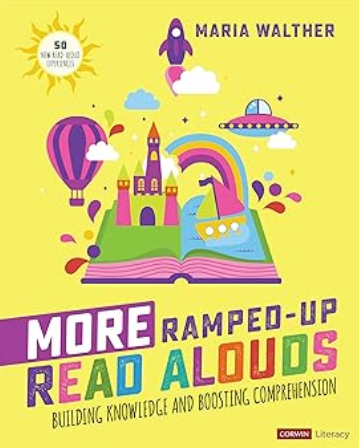
Maria P. Walther
Unlock the transformative potential of read-aloud to joyfully strengthen essential literacy skills.
In this eagerly anticipated follow-up to Maria Walther’s The Ramped-Up Read Aloud, discover 50 MORE read-aloud experiences designed to bolster students’ literacy development, ignite imagination, and enhance motivation.
Backed by the latest research, this indispensable guide equips educators with the knowledge and tools to make read alouds a cornerstone of their teaching practice. More Ramped-Up Read Alouds includes lessons focused on foundational reading concepts like phonological awareness and decoding along with a new chapter on integrating literacy with STEAM.
This must-have resource for K-5 teachers, librarians, schools, and districts goes beyond the basics. It empowers educators to elevate their read alouds, offering strategies to broaden students’ content knowledge, expand vocabulary, and boost listening comprehension. Each read-aloud experience features:
- Standards-based learning targets
- Key vocabulary words with kid-friendly definitions
- Effective questioning techniques
- Innovative reading response ideas
- Targeted extension activities to enhance the experience for upper elementary learners
Looking to create joyful, enriching reading experiences that will lead to endless possibilities? Search no further! It’s time to make interactive read-aloud a non-negotiable part of the day―and watch learners soar!
Recommended for: Public Libraries, School Libraries
Pairing STEAM with Stories: 46 Hands-On Activities for Children
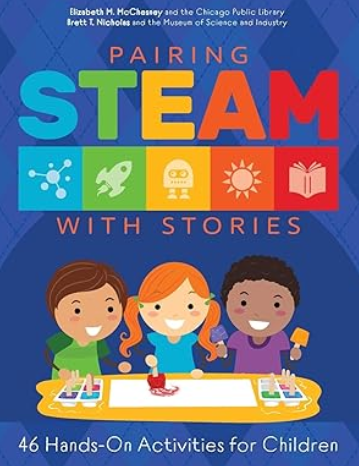
Elizabeth M McChesney and Bret Nicholas
Laying the groundwork for building children’s curiosity, openness to learning, ability to persist in the face of failure, and interest in connecting learning from one subject to the other are important objectives for today’s libraries. Partnering with cultural institutions, such as the Chicago Public Library (CPL) does with Chicago’s Museum of Science and Industry (MSI), libraries can forge powerful connections between literacy and science. This resource shares the fruits of that partnership, offering ready-to-go, library-tested activities that meld cutting-edge STEAM education principles with some of the best books available for youth today. It’s a model that can be used in a variety of library or museum settings and can also be adapted for outreach. Inside, readers will find
- 46 book-based, customizable STEAM activities, each complete with program length, materials list, and step-by-step instructions;
- real-life tips, advice, and thoughts from practicing CPL librarians sprinkled throughout the book;
- pointers on incorporating STEAM into existing programs;
- pedagogical strategies behind effective STEAM experiences, ensuring successful implementation of these skills; and
- helpful supporting materials such as a program planning rubric and a vendor list.
The activities in this book will make STEAM education fun while planting the seeds for lifelong learning.
Recommended for: Public Libraries, School Libraries
Profiles in Resilience: Books for Children and Teens that Center the Live Experience of Generational Poverty
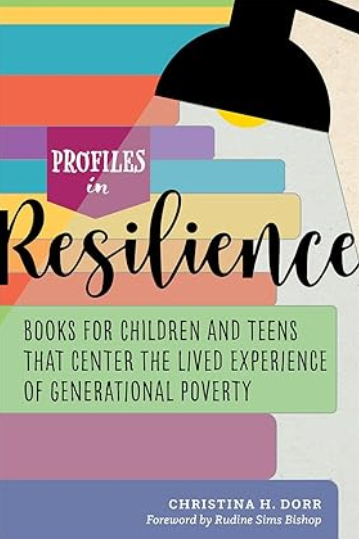
Christina H. Dorr
“This book helps to expand the definition of diversity in children’s books by shedding light on an element of diversity that is sometimes overlooked—economic situation or income . . . Teachers and librarians will find it informative and engaging as it deepens their experience with both authors and books as well as their understanding of children who are experiencing generational poverty.”
—from the Foreword by Dr. Rudine Sims Bishop, Professor Emeritus, The Ohio State University
Drawing from her own lived experience, in this guide Dorr shines a light on some of the cultural values that exist across both rural and urban poverty, inviting teachers, librarians, and others who work with children from low-income families to see them in their cultural context and appreciate the values they bring to the classroom or library. She spotlights a range of books for children and teens that offer literary mirrors to low-income children, as well as windows to more economically privileged readers, enabling all young readers to celebrate our common humanity. And she also shares the work of ten authors and illustrators familiar with poverty, offering insights into the sources of their stories and the ways storytellers’ lived experience can influence their creative works and make their characters more authentic. You will discover
- an introduction which explores what it’s like to grow up in generational poverty, including its long-term effects on children, the roles played by intersectional and institutional racism, the power of family, and how reading can act as powerful catalyst;
- biographical sketches of Elizabeth Acevedo, Jason Reynolds, Cynthia Rylant, Kelly Yang, and other authors and illustrators;
- inspiring profiles and books spanning age ranges, genres, and formats that chronicle the lives of Ruth Bader Ginsberg, Kareem Abdul-Jabbar, Sonia Sotomayor, John Lewis, Wilma Mankiller, and other people who were raised in generational poverty; and
- four appendixes which spotlight even more stories of resilient individuals and fictional characters.
Recommended for: Academic Libraries, Public Libraries, School Libraries
The Ramped-Up Read Aloud: What to Notice as You Turn the Page
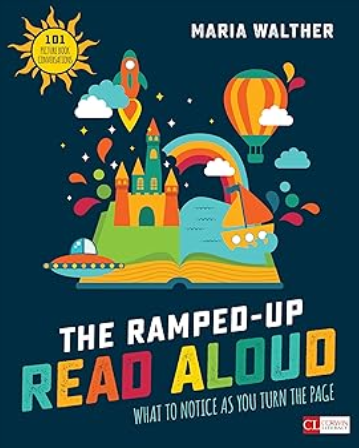
Maria P. Walther
In this remarkable resource, Maria Walther shares two page read aloud experiences for 101 picture books that tune you into what to notice, say, and wonder in order to bolster students’ literacy exponentially.
A first grade teacher for decades, Maria is a master of “strategic savoring.” Her lesson design efficiently sparks instructional conversations around each book’s cover illustration, enriching vocabulary words, literary language, and the ideas and themes vital to young learners.
Teachers, schools, and districts looking to energize your core reading and writing program, search no further: The Ramped Up Read Aloud delivers a formula for literacy development and a springboard to joy in equal parts.
Recommended for: Public Libraries, School Libraries
Records and Information Management, 3rd Edition
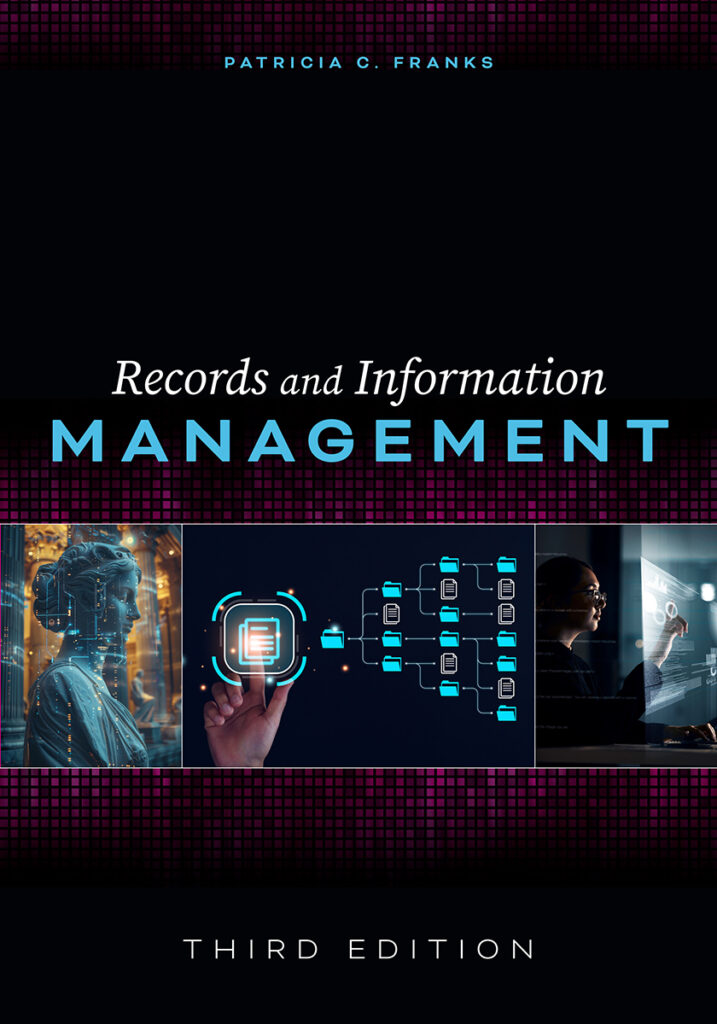
Patricia C. Franks
Widely acknowledged as the benchmark text for both students and RIM professionals (“extremely comprehensive and accessible,” raves Archival Issues) the new third edition updates its authoritative blend of theory and practice to reflect the field’s dynamically evolving environment, including the rapid rise of applications powered by AI/ML. Franks presents complete coverage of the records and information lifecycle model, encompassing paper, electronic (databases, office suites such as Microsoft 365, and email), and new media records (blogs, chat messages, and software as a service), while acknowledging the influence of emerging and developing technologies and encouraging new ways of meeting the resulting challenges. In this book, enhanced with supplemental contributions from a wide range of thought leaders and practitioners, readers will explore such keys topics as:
- the latest advances in disruptive technologies, including blockchain, Web3, the metaverse, and evolving digital communication tools such as enterprise social media;
- an overview of the origins and development of records and information management;
- the discipline of information governance and the steps to develop a strategic records and information management plan;
- a completely new chapter that demystifies data governance, automation, and AI;
- strategies for the creation/capture and classification of records and information;
- approaches to retention strategies, inactive records management, archives, and long-term digital preservation;
- methods for access, storage, and retrieval of records and information;
- insight into electronic records and electronic records management systems;
- practices for safeguarding essential records, including disaster preparedness, recovery, and business continuity;
- approaches to monitoring, auditing, privacy, security, and risk management;
- fresh discussion of the leadership and management skills required of RIM professionals; and
- expert guidance on trendspotting, education, and training.
Recommended for: Academic Libraries, Public Libraries, Special Libraries
Revolutionize Youth Book Clubs: Strategies for Meaningful and Fun Reading Experiences
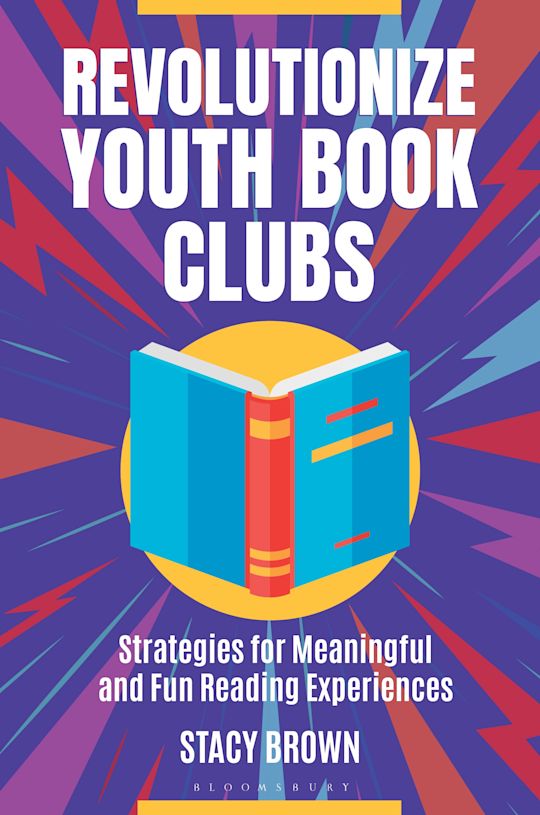
Stacy Brown
Learn to facilitate modern book clubs devoted to elevating the reading experience through active engagement, resulting in long-term commitment to book club events.
How do you get the kids in your library to read? The benefits of reading are plentiful, especially for youth – it improves vocabulary, helps them become more empathetic and inclusive, and expands exposure to academic opportunities. In an age of digital distractions, book clubs can be a catalyst for encouraging youth to prioritize reading.
These tried and tested strategies help even reluctant readers develop a love of reading through book club participation. Author Stacy Brown, who has facilitated book clubs for more than twenty years, shows you how to build active engagement through hands-on activities, reflective discussions, and theme-related tips and tricks, even in the face of time and budget constraints. Learn how to attract participants, brand and market your book clubs, and keep attendees returning for more. You’ll be changing the world – one book club at a time.
Recommended for: Public Libraries, School Libraries
The Small to Mid-Size Academic Library: Collaborations and Outreach
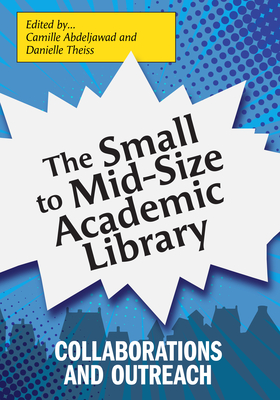
Camile Abdeljawad and Danielle Theiss
Collaboration is not only a lifeline for small and mid-size academic libraries, it is also their lifeblood.
—From the Foreword by Peter Felten and Joan D. Ruelle
Small to mid-size academic libraries often operate with reduced staffing, smaller budgets, and competing priorities. These limitations reduce the resources that can be allocated to programming and outreach efforts.
The Small to Midsize Academic Library: Collaborations and Outreach captures how academic library workers at these institutions are providing engagement and outreach opportunities for students by partnering with other entities across their campuses. In three parts, chapters provide easy-to-implement ideas and strategies for course, campus, and community outreach.
- Part 1: Collaborations
- Cross-Campus Initiatives
- External Collaborations
- Part 2: Academic Success Initiatives
- Writing and Composition
- Orientation and Programming
- Part 3: Evolving Roles of Libraries in Student Success
- Student Wellness
- Emerging Roles for Librarians
Increased student engagement with cocurricular library and cross-departmental activities can lead to higher student retention and persistence rates. Academic libraries have an important role to play in providing these opportunities, and Collaborations and Outreach provides effective practices for supporting student success.
Recommended for: Academic Libraries
Strive-for-Five Conversations: A Framework that gets Kids Talking to Accelerate their Language Comprehension & Literacy
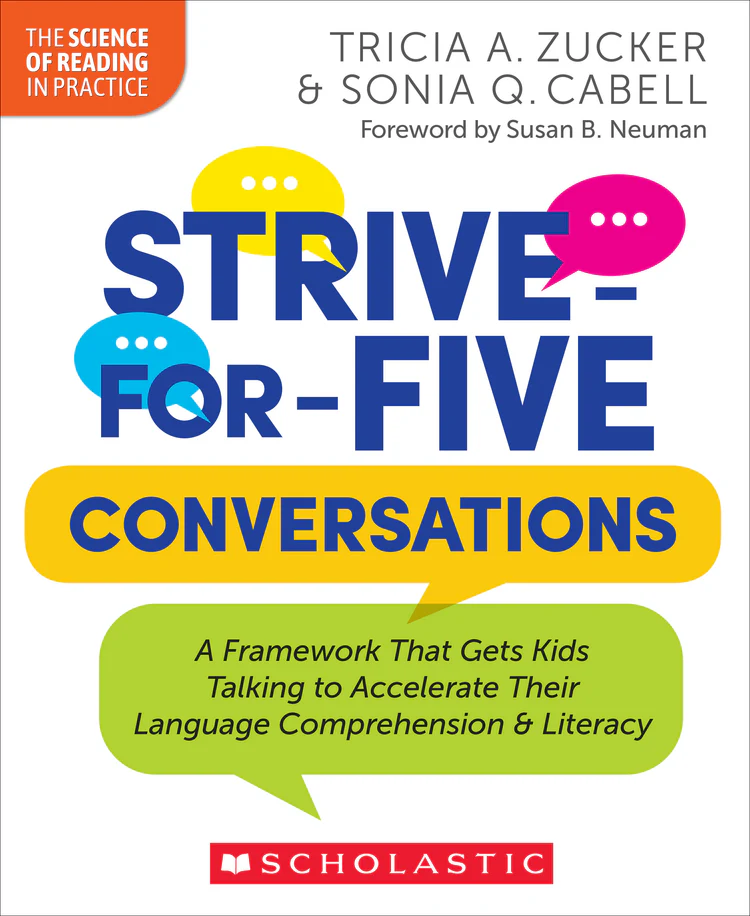
Tricia A. Zucker and Sonia Q. Cabell
Teachers know that encouraging young children to talk and listen improves their ability to communicate. This book gives them a power tool aligned with the science of reading: the “Strive-for-Five” framework. These responsive conversations start with what children say and continue as the teacher listens and responds over five turns—with the goal of stretching their talking and thinking, knowledge, vocabulary, reasoning, and other skills that underpin reading success.
In an accessible format that contains video clips, along with classroom anecdotes and model conversations, Zucker and Cabell show why Strive-for-Five conversations are important and how teachers can use them to engage children and develop their language comprehension. As teachers use the framework to build students’ knowledge, vocabulary, reasoning, and other skills that underpin reading success, they’ll also see students’ confidence grow as they share their individual stories, ideas, and questions.
Recommended for: School Libraries
Training Library Instructors: Volume One – A Guide to Training Graduate Students
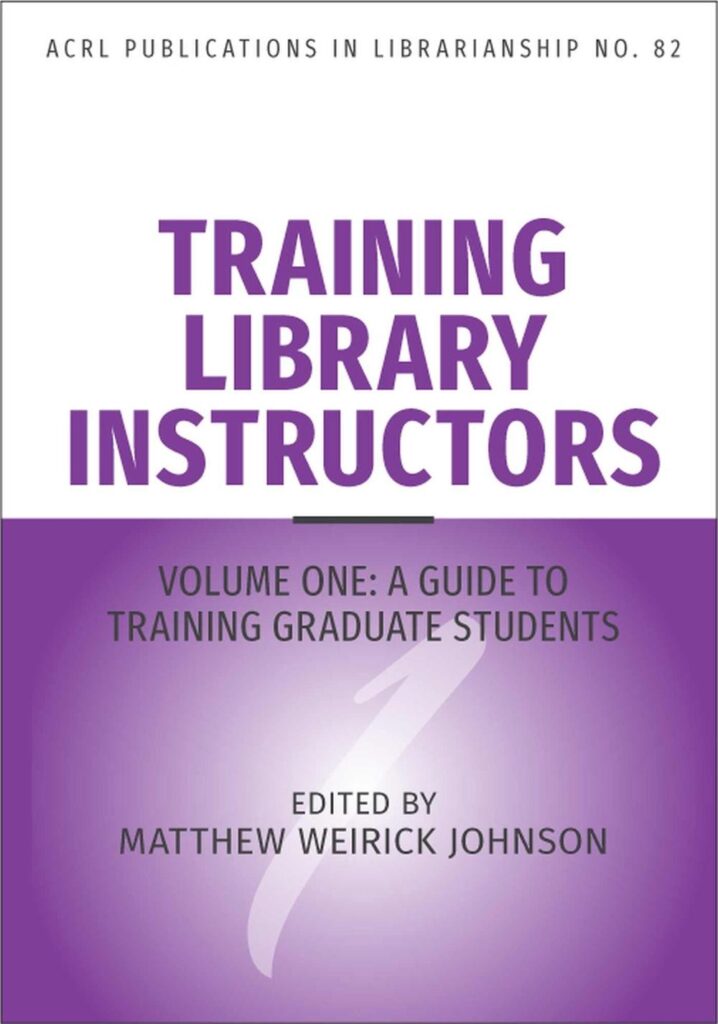
Edited by Matthew Weirick Johnson
Pedagogy impacts all parts of library work and culture. It changes the way we interact with learners regardless of setting and however we name or define the teaching moment, from research help to outreach to leading meetings. Pedagogy is a praxis of relation, and studying it can improve all aspects of our work and organizations.
In two volumes, Training Library Instructors collects examples of how we train our colleagues to teach, whether they’re student workers, non-librarian staff, new or experienced librarians, or something else entirely. Volume 1, A Guide to Training Graduate Students, focuses on teacher training for graduate students in LIS programs and in academic libraries. It presents existing literature and theories, approaches to teaching library school students to teach, and critical reflections from librarians about their varied experiences receiving teacher training.
A Guide to Training Graduate Students provides a useful introduction, detailed examples, and salient reflections to help us better train library instructors during their time as graduate students through coursework and work experience. You’ll discover ideas for designing courses, internships, and other programs and ways to mentor graduate students who are interested in becoming library instructors.
Recommended for: Academic Libraries
Training Library Instructors: Volume Two – a Guide to Training Librarians
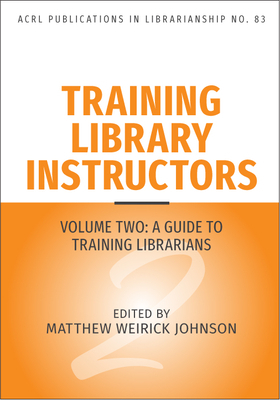
Edited by Matthew Weirick Johnson
Pedagogy impacts all parts of library work and culture. It changes the way we interact with learners regardless of setting and however we name or define the teaching moment, from research help to outreach to leading meetings. Pedagogy is a praxis of relation, and studying it can improve all aspects of our work and organizations.
In two volumes, Training Library Instructors collects examples of how we train our colleagues to teach, whether they’re student workers, non-librarian staff, new or experienced librarians, or something else entirely. In Volume 2, A Guide to Training Librarians, librarians share their knowledge about teaching, learning, and pedagogy through a variety of replicable activities: formal and informal workshops, courses, communities of practice, peer observation, and more. Programs include mock instruction, nano-teaching, and other feedback and homework mechanisms; happen at the individual, institutional, or consortial level; and can involve collaborations across library or university departments.
Recommended for: Academic Libraries
Understanding Public Libraries: Management, Leadership and Ideology
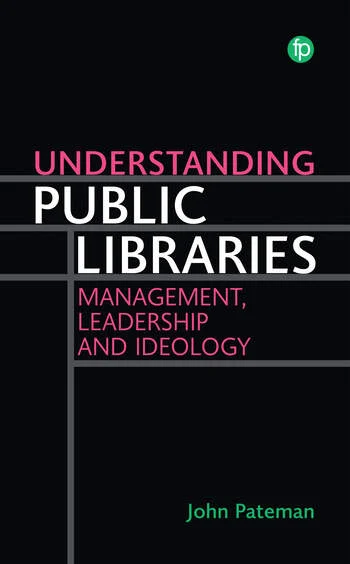
John Pateman
Understanding Public Libraries: Management, Leadership and Ideology sets out a robust new analytical framework for understanding, managing and supporting public libraries. Drawing on the ideas of Marx and Maslow and their theories of dialectical materialism and cultural hegemony, experienced library leader John Pateman presents how this framework can be used in public libraries to create change and ensure their survival in the future.
This book is essential reading for practitioners, students and researchers in the library and information sciences, the ideological focus of this book importantly advances a scientific understanding of public libraries and ultimately poses and explores the vital question: whose interests should public libraries serve?
Recommended for: Public Libraries
Using Literature to Support Children’s Mental Health
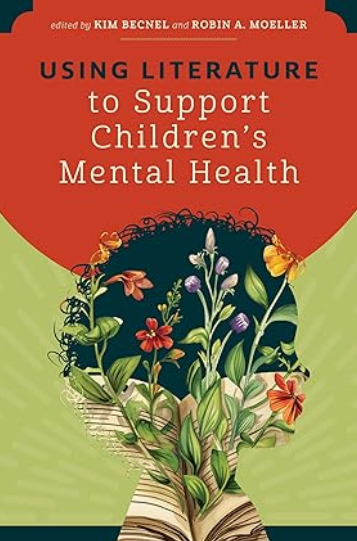
Edited by Kim Becnal and Robin A. Moeller
Generation Z and Alpha youth are facing mental health crises that many adults are unprepared to address. There have been dramatic rises in the numbers of young people reporting feelings of hopelessness, suicidal thoughts, and anxiety. The global COVID-19 pandemic brought such a devastating impact on mental health of young people that it sparked national and global conversations, but experts say that the pandemic only exacerbated problematic trends already well underway. One small silver lining is the proliferation of new fiction and nonfiction geared towards children who are struggling, including books with themes related to social and emotional learning, psychological wellbeing, and specific mental health challenges. Edited by former public and school librarians, this important resource explores the exciting landscape of recent children’s literature and provides helpful frameworks and strategies for adults to think about the evaluation, curation, and use of these books with young people. Readers will discover
- books for children dealing with the cancer diagnosis of a relative, illnesses, death, loss, and grief, with suggested activities that can be paired with these titles to further assist young readers in the grieving and healing process;
- fantasy bibliotherapy to help children understand, process, and cope with anxiety-provoking situations in their lives;
- graphic novels that promote mental and emotional wellbeing, including those that depict common childhood mental health conditions such as obsessive-compulsive disorder;
- guidance on reaching historically underserved population groups such as Black girls, Muslim children, and young Latin American migrants; and
- using children’s literature to support the unique needs of autistic mental health.
Recommended for: Public Libraries, School Libraries
Well-Being in the Library Workplace: A Handbook for Managers
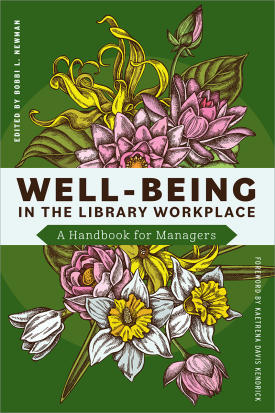
Edited by Bobbi L. Newman
Fostering well-being in today’s library workplaces is no longer a luxury but a necessity, particularly for managers tasked with guiding and supporting their teams. Amidst budget cuts, attempts to ban or restrict books, attacks on library staff online and in-person, and potentially hostile and aggressive patrons, taking care of ourselves and our staff by putting good policies and practices into place is more important than ever. In this book, Newman and her expert contributors will lead you through creating an environment that nurtures the health, satisfaction, and well-being of its workers and helps prevent or reduce the internal factors that create an unhealthy workplace. You will receive actionable advice on
- navigating the pitfalls of vocational awe, which can lead to unrealistic expectations and self-neglect;
- setting and recalibrating healthy boundaries;
- approaching difficult conversations by creating spaces for positive staff communication;
- overcoming limited budgets;
- the proper mindset for encouraging realistic performance expectations among employees;
- using recognition, appreciation, and staff professional development as tools for wellness;
- nurturing social connections and collaboration to combat loneliness;
- effective techniques for addressing sensitive issues such as disabilities, confronting anti-fat bias, and moral injury;
- emotional and invisible labor mitigation; and
- self-care methods for library leaders at risk of burnout.
Recommended for: Academic Libraries, Public Libraries, School Libraries, Special Libraries
Wonder Libraries: 20 Expert Perspectives on What Kids Need Now
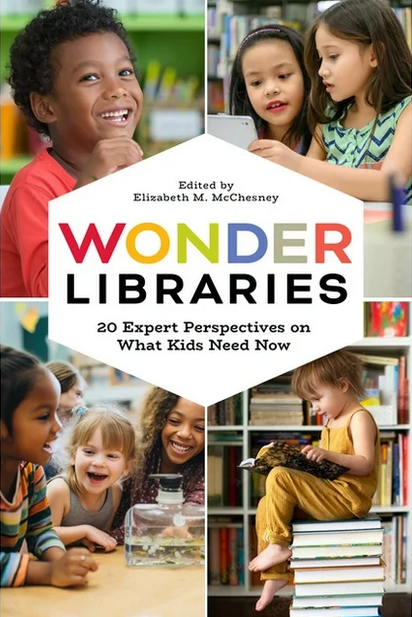
Edited by Elizabeth M McChesney
Though librarians, educators, and other professionals who serve children and teens continuously strive towards equitable outcomes that help kids heal, grow, and flourish, it can be a challenge to settle upon small, actionable steps for moving forward. This collection shares a rainbow of ideas, initiatives, and activities for promoting joyful, supportive learning for every child. It gathers contributions from thought-leaders and advocates working with youth outside the realm of the public library, collecting their expertise, best practices, and recent research. With examples applicable in a variety of settings, from this book readers will
- find concrete ways to spark happiness, kindle curiosity, and deepen learning in kids;
- receive guidance on building authentic relationships and humble partnerships with children and communities;
- learn about real-world examples that explore becoming a “trusted messenger” to new parents, Reach Out and Read at Lurie Children’s Hospital, food literacy, trauma-responsive library services, nature and Indigenous wisdom, using gaming to foster literacy, countering misinformation in the Black Community, technology-based play, STEM learning, summer programs, and many others; and
- discover five action items at the conclusion of each essay that will enrich their work and their organizations.
Recommended for: Public Libraries, School Libraries
